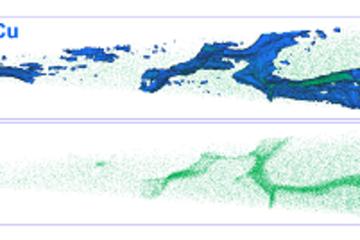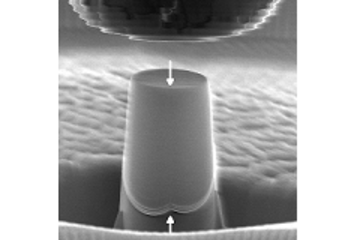All genres
181.
Talk
Ab initio basierte Simulation zur Wasserstoffversprödung in hoch-Mn Stählen. Seminar der Staatlichen Materialprüfungsanstalt Darmstadt, Institut für Werkstoffkunde, Darmstadt, Germany (2020)
182.
Talk
Innovative concepts in materials design to boost renewable energies. Seminar of Institute for Innovative Technologies, SRH Berlin University of Applied Sciences, Berlin, Germany (2020)
183.
Talk
Construction and exploitation of large ab initio data spaces to design materials with superior mechanical properties. MRS-J: Materials Research Meeting 2019, Yokohama, Japan (2019)
184.
Talk
Automated ab-initio Determination of Materials Properties at finite Temperatures with pyiron. CNLS Seminar, Los Alamos, NM, USA (2019)
185.
Talk
Ab initio descriptors to design materials with superior mechanical properties. Materials Day, ETH Zürich, Zürich, Switzerland (2019)
186.
Talk
Ab initio description of coupling phenomena between magnetic and structural degrees of freedom. EASTMAG2019 – VII Euro-Asian Symposium “Trends in Magnetism”, Jekaterinburg, Russia (2019)
187.
Talk
Ab initio simulation of finite temperature phase stabilities: Concepts and application. HetSys Launch Event, Warwick, UK (2019)
188.
Talk
Atomistic investigation of stacking faults in non-stoichiometric Fe–Nb Alloys. EUROMAT 2019, Stockholm, Sweden (2019)
189.
Talk
Ab initio input for multiphysics models: Accuracy, performance and challenges. ISAM4: The fourth International Symposium on Atomistic and Multiscale Modeling of Mechanics and Multiphysics, Erlangen, Germany (2019)
190.
Talk
Precipitate-induced nonlinearities of solute diffusion in Al-based alloys. 15th Diffusion in Solids and Liquids (DSL) Conference, Athens, Greece (2019)
191.
Talk
Ab initio design strategies for NiMn-based FSMA. 6th Int. Conf. of Ferromagnetic Shape-Memory Alloys CFSMA, Prague, Czech Republic (2019)
192.
Talk
Exploiting large ab initio data spaces to design materials with superior mechanical propertiess. 2019 BIOVIA User Conference, Düsseldorf, Germany (2019)
193.
Talk
Automated uncertainty analysis and quantification for high-precision DFT calculations. Workshop "Precision Quantification in DFT", Louvaine-la-Neuve, Belgien (2019)
194.
Talk
Atomistic simulations of hydrogen-defect interactions in metals. Workshop "Hydrogen in Metals - current understanding and future needs", St Anne's College, Oxford, UK (2019)
195.
Talk
High-throughput optimization of finite temperature phase stabilities: Concepts and application. DPG Frühjahrstagung der Sektion Kondensierte Materie, Regensburg, Germany (2019)
196.
Talk
κ carbide microstructures and the role of interfaces in high-Mn lightweight steels. High-Mn Steel 2019, Aachen, Germany (2019)
197.
Talk
Modelling structural materials in realistic environments by ab initio thermodynamics. Hume-Rothery Award Symposium, TMS2019 Annual Meeting and Exhibition, San Antonio, TX, USA (2019)
198.
Talk
Application of Density Functional Theory in the Context of Phase Diagram Modelling. MSIT Winter School on Materials Chemistry, Castle Ringberg, Tegernsee (2019)
199.
Talk
Energetics of non-stoichiometric stacking faults in Fe–Nb alloys: An ab initio study. TMS 2019 Annual Meeting, San Antonio, TX, USA (2019)
200.
Talk
Exploiting large ab initio data spaces to design materials. Openning of Christian Doppler Laboratory for nanoscale phase transformations, Linz, Austria (2019)











